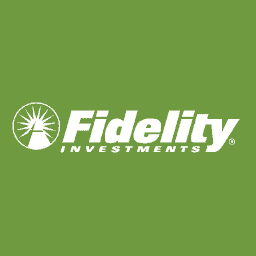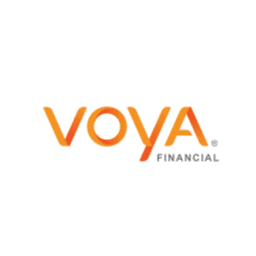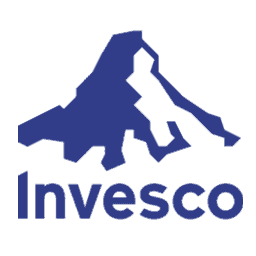Mutual funds are among the most popular investment vehicles in the United States. Many people’s first investment is a mutual fund as they provide you with diversified investment exposure to the financial markets.
In this article, you will learn what mutual funds are, how they work, and what to look for when choosing a fund. Additionally, you will also find a list of the best mutual funds that you can invest in today.
What Are Mutual Funds?
A mutual fund is an investment vehicle that pools together investors’ money to invest in a range of different assets to enable its investors to gain broad investment exposure to a particular market. They are professionally-managed by fund managers who decide what investments the fund makes given the funds’ pre-determined investment objectives and restrictions.
Mutual funds can be either actively or passively-managed. An actively managed fund aims to outperform its benchmark index through superior asset allocation, while a passively-managed fund seeks to replicate an index to enable investors to receive the same returns as “the market.”
The BlackRock Technology Opportunities Fund (BGSAX), for example, is an actively-managed mutual fundthat invests in the stocks of U.S. and non-U.S. technology companies to enable its investors to benefit from the growth in the technology sector. Conversely, the Vanguard 500 Index Fund Admiral is a passively-managed fund that replicates the performance of the S&P 500 stock index.
Mutual funds can invest in a wide variety of asset classes, including:
- Equities
- Bonds
- Commodities (Gold, Oil, etc.)
- Money Markets
- Real Estate
- Global Markets
- Alternative Investments
According to data compiled by Statistica, there are over 9,500 mutual funds in the United States. So there are plenty of funds to choose from!
Why Invest in a Mutual Fund?
Americans love mutual funds, and there is a reason for that.
Mutual funds enable you to invest in a diversified portfolio that is managed by a professional money manager.
In other words, mutual funds enable you to give money to an experienced fund manager who will invest it for you in exchange for a fee. For inexperienced investors who want to invest but don’t want to or feel like they can’t take the time to learn about investing and money management, investing in a mutual fund seems like a logical choice.
What to Look For When Before Investing in a Mutual Fund
Not all mutual funds are created equal. Therefore, it is essential to know what to look for when choosing a fund to invest in.
So, let’s look at a list of questions you should ask yourself before making a mutual fund investment. Feel free to use these questions as a checklist!
- What does the fund invest in?
- What fees does the fund charge?
- How has the fund performed so far?
- Who is managing your money?
What does the fund invest in?
First and foremost, you should be clear about what you want to invest in. Do you want to invest in the stock market? Do you want to invest in tech stocks? Do you want to invest low-risk bonds? Or do you want to invest in a balanced portfolio that gives you broad exposure to a range of asset classes?
Once you are clear on what you would like to invest in, you can filter funds via your investment criteria to find ones that suit your investment needs.
What fees does the fund charge?
Check the fee structure in the fund prospectus. The reason for that is that fees will eat into your profits. And if you choose a fund with a high expense ratio, the charges may end up eating your investment profits.
For example, if you invest in a mutual fund that charges a 2% fund management fee for five years, and the fund only generates an average annual return of 3% a year, you will only end up with a 1% increase in the value of your investment on average per year. If the country you are in then has an annual inflation rate of 1% in each of the five years, your real return would be zero.
Also, are there any load fees? Some funds charge a load fee when you buy or sell the fund. So look out for those too.
How has the fund performed so far?
Look at the fund’s historical performance. Has it underperformed or outperformed its benchmark?
If an actively-managed fund regularly underperforms the benchmark index it is supposed to beat; then you are probably better off buying an index tracker fund. Conversely, if it regularly outperforms, the fund manager is clearly doing something right.
While you should check the fund’s performance, it is important to note that past performance does not guarantee future returns. A fund manager could perform well for three years in a row – for example, during a bull market – and then underperform in the next.
Who is managing your money?
Finally, have a look at who will be managing your money to see if they are up to the task.
In the fund prospectus, you will find the name of the portfolio manager who is in charge of allocating the fund’s money. Feel free to Google him or her to see what experience and background they have and if they have successfully managed funds in the past.
While you don’t become a portfolio manager without adequate experience and skills, it is still good due diligence to find out exactly who is managing your money.
How to Invest in a Mutual Fund
While financial investment may seem daunting to first-time investors, buying a mutual fund is actually relatively straightforward. The steps are as follows: Sign up for an online brokerage account or an investment app that provides a wide range of funds you can invest in.
Choose the mutual fund(s) you want to invest in. Between stock mutual funds, bond mutual funds, index tracker funds, and alternative investment funds, you will have a lot to choose from. Make sure you choose funds that provide you with the type of investment exposure and level of risk you want. Moreover, make sure that the funds you want to invest have a low expense ratio.
Fund your investment account via bank transfer or other available payment methods.
Click the buy button on the mutual fund(s) you have chosen to invest in them.
Check in periodically on how your mutual fund investments are performing.
That’s it. You are now invested in mutual funds!
Best Mutual Funds
To compose our list of the best mutual funds, we have analyzed a wide range of funds using rating criteria such as minimum investment, expense ratio, assets under management, and performance. Then, we categorized the highest-ranking funds into different asset classes.
| Index Funds | Asset Class |
|---|---|
| Vanguard 500 Index Fund Admiral Shares (VFIAX) | S&P 500 Index |
| Vanguard Balanced Index (VBIAX) | Balanced |
| Fidelity Select Software & IT Services Fund (FSCSX) | Tech Stocks |
| Vanguard Total Bond Market Index (VBTLX) | Bonds |
| BlackRock Technology Opportunities Fund (BGSAX) | Tech Stocks |
| Fidelity Zero Large Cap Index (FNILX) | US Large-Cap Stocks |
| Fidelity Total Bond Fund (FTBFX) | Bonds |
| Voya Global Perspectives Fund (IAPVX) | Balanced |
| Invesco Balanced-Risk Commodity Strategy Fund (BRCAX) | Commodities |
| BlackRock Commodity Strategies Fund (BCSAX) | Commodities |
Vanguard 500 Index Fund Admiral Shares (VFIAX)
The Vanguard 500 Index Fund is an index tracker fund that aims to replicate the performance of the S&P 500 Index by purchasing the same holding as the index.
If you are looking for a low-cost stock mutual fund, the Vanguard 500 Index Fund would be one of the logical choices.
- Asset Class: S&P 500 Index
- Minimum Investment: $3,000
- Expense Ratio: 0.04%

Vanguard Balanced Index (VBIAX)
The Vanguard Balanced Index Fund invests in a combination of stocks and bonds to provide investors with a diversified investment exposure.
If you are looking to invest in a mutual fund that provides you with a ready-made diversified portfolio with a low expense ratio, the Vanguard Balanced Index Fund may be right up your alley.
- Asset Class: Balanced
- Minimum Investment: $3,000
- Expense Ratio: 0.07%

Fidelity Select Software & IT Services Fund (FSCSX)
The Fidelity Select Software & IT Services Fund is a technology stocks mutual fund that invests in companies that are engaged in research, design, production or distribution of IT products and services.
If you are looking to add exposure to the tech sector to your portfolio, the Fidelity Select Software & IT Services Fund enables you to do that at a relatively low expense ratio compared to other actively-managed tech funds.
- Asset Class: Tech Stocks
- Minimum Investment: $0
- Expense Ratio: 0.71%

Vanguard Total Bond Market Index (VBTLX)
The Vanguard Total Bond Market Index Fund is a bond index fund that tracks the performance of the Bloomberg Barclays U.S. Aggregate Float Adjusted Index.
If you are looking for broad exposure to the bond markets with a low annual fee, the Vanguard Total Bond Market Index Fund should be right up your alley.
- Asset Class: Bonds
- Minimum Investment: $3,000
- Expense Ratio: 0.05%

BlackRock Technology Opportunities Fund (BGSAX)
The BlackRock Technology Opportunities Fund (BGSAX) is a stock mutual fund that invests in U.S. and non-U.S. technology companies. The fund enables investors to gain exposure to the performance of the global technology industry.
If you want tech exposure in your stock portfolio, the BlackRock Technology Opportunities fund provides an interesting opportunity. However, the fund does charge 1.18% in annual fees.
- Asset Class: Tech Stocks
- Minimum Investment: $1,000
- Expense Ratio: 1.18%

Fidelity Zero Large Cap Index (FNILX)
The Fidelity Zero Large Cap Index Fund is another popular choice among stock mutual funds investors as it provides exposure to large-cap stocks while charging zero fees.
If you want to invest in stocks for free, the Fidelity Zero Large Cap Index Fund makes that a possibility. Moreover, it has no investment minimum so you can start with just a few dollars.
- Asset Class: U.S. Large-Cap Stocks
- Minimum Investment: $0
- Expense Ratio: 0%

Fidelity Total Bond Fund (FTBFX)
The Fidelity Total Bond Fund is a bond mutual fund that tracks the performance of the Bloomberg Barclays U.S. Universal Bond Index.
If you are looking to add exposure to the U.S. bond market to your investment portfolio, the Fidelity Total Bond Fund is an excellent option.
- Asset Class: Bonds
- Minimum Investment: $0
- Expense Ratio: 0.45%

Voya Global Perspectives Fund (IAPVX)
The Voya Global Perspectives Fund invests in stocks and bonds with a 60/40 ratio to provide investors with a diversified portfolio.
If you want to invest in a mutual fund that provides a balanced investment exposure, the Voya Global Perspectives Fund would be an option.
- Asset Class: Balanced
- Minimum Investment: $1,000
- Expense Ratio: 0.53%

Invesco Balanced-Risk Commodity Strategy Fund (BRCAX)
The Invesco Balanced-Risk Commodity Strategy Fund is a total return fund that invests in commodity derivatives and other commodity-linked financial products to provide exposure to the agriculture, energy, industrial metals and precious metals markets.
If you are looking for exposure to the commodity markets, the Invesco Balanced-Risk Commodity Strategy Fund would be an interesting pick. Albeit, this commodity mutual fund comes with a 1.31% expense ratio.
- Asset Class: Commodities
- Minimum Investment: $1,000
- Expense Ratio: 1.31%

BlackRock Commodity Strategies Fund (BCSAX)
The BlackRock Commodity Strategies Fund is a mutual fund that invests in commodity-linked notes and derivatives as well as in equity of enterprises in the commodity sector.
If you are looking to build an investment portfolio with exposure to the commodity markets, the BlackRock Commodity Strategies Fund would be an option. However, it does come with a relatively high expense ratio of 1.36%.
- Asset Class: Commodities
- Minimum Investment: $1,000
- Expense Ratio: 1.36%

What’s Next
Now that you know what mutual funds are, how they work, and how to pick one that is right for your investment goals, you are ready to get started.







